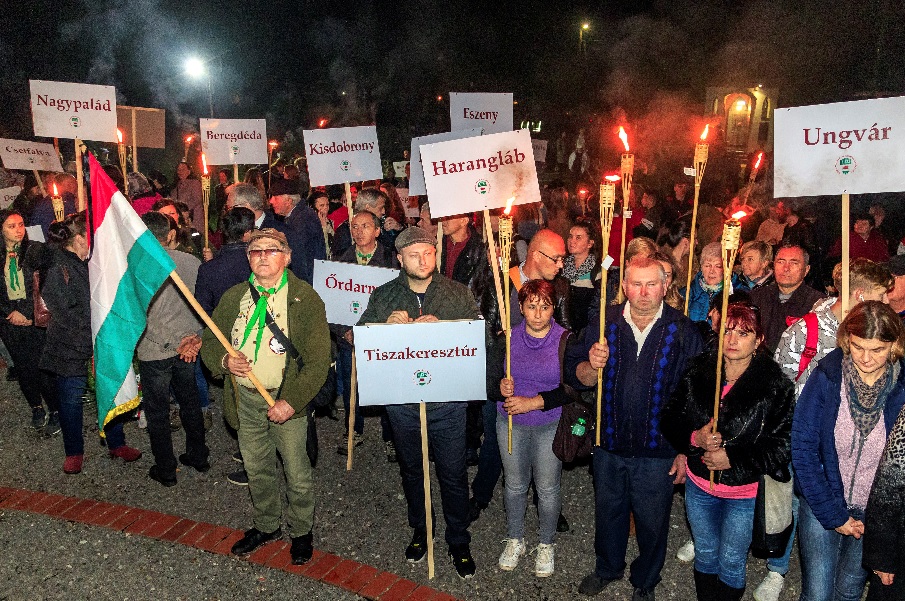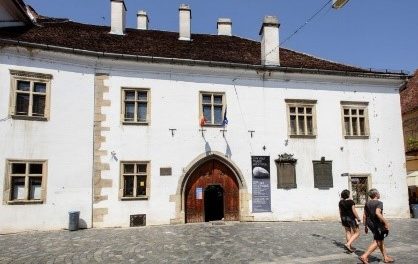The 822-page document collection was jointly published by the Budapest Capital Archives with the Kárpáti Kiado in Ungvár and the National Remembrance Committee. Subtitle of the volume: Archives and documents.
Director General István Kenyeres, who wrote the foreword to the volume, said that the work is the result of multifaceted cooperation and extensive work. In 2013, the first project of the Metropolitan Archives was realized with the support of the Ministry of Foreign Affairs and Budapest Metropolitan Municipality, the specific purpose of which was to save the endangered materials of the Beregszász Archives of the Transcarpathian Territorial Archives. The task was completed by 2015. , István Tóth, who was also present at the book launch, suggested the publication of the volume.
Viktor Braslavec , the director of Kárpáti Kiadó, expressed his joy that an impressive work had been published, and then drew attention to the fact that in the early 1990s - when the majority of the KGB's materials were transported from, for example, the Baltic countries and Kazakhstan to the central Moscow into archives or were destroyed, until then the greater part of them remained almost untouched in Ukraine. At that time, the relationship with the center could be said to be good, so they had relatively easy access to the sources in the Moscow archives, a significant part of which was also published in the current volume.
Oleksiy Korzun , the editor of the volume, was also affected by the Holodomor, but fate brought him to work for the KGB. He came to Transcarpathia in 1981, and after originally graduating with a degree in history, in 1989, as deputy director of the KGB in Transcarpathia, he faced the human tragedies that befell the local Hungarians and Germans from the fall of 1944 in public forums.
Oleksiy Korzun said that various Soviet internal security organizations, such as SZMERS and NKVD units, which arrived in Transcarpathia with the troops of the 4th Ukrainian Front, immediately began their activities. They could take anyone they wanted, and the local population, mainly Germans and Hungarians, were treated as prisoners of war regardless of whether they actually took part in the war at all.
Historian Gyula Kosztyó, an employee of the Clio Institute, notes in his foreword to the Hungarian edition that the 4th Ukrainian Front of the Red Army appeared in the area of the Tatar Pass on September 27, 1944 and occupied Transcarpathia within a month. The problem was that Transcarpathia had never belonged to either Russia or the Soviet Union, so the local Ruthenian population was considered Ukrainian and could be "reunified" with Soviet Ukraine, so to speak, although there was no doubt that there were many local Ruthenians who supported the Soviet authorities .
But not only the units of the Soviet army appeared in Transcarpathia, but on October 24, 1944, the representatives of the exiled Czechoslovak government in London did the same! the leadership of minister-rank František Němec, they drafted a manifesto and set about reorganizing the Czechoslovak civil administration in Subcarpathia according to the laws before the first Vienna decision.
A people's meeting was even organized in Huzton in November 1944. On the other hand, the communist party organizations, which were established with incredible speed, held a meeting in Munkác on November 13, 1944, and on November 19, 1944, they adopted a resolution on "Transcarpathian reunification with Ukraine" . On December 5, 1944, the People's Council of Transcarpathian Ukraine sent a memorandum to President Beneš By the beginning of January 1945, the representatives of the government-in-exile in London complied with this request. The sovietization of the area therefore began already on the day the Red Army appeared. Nationalizations took place here much earlier than elsewhere in the region. On June 29, 1945, the Soviet Union signed a treaty with the Czechoslovak government on the transfer of territory, which was ratified in Prague on August 23, 1945. The convention entered into force on January 30, 1946, but already on January 22, 1946, the Presidium of the Supreme Council of the SZU established the Transcarpathian Territory with its seat in Ungvár by Decree No. 218.
With this, the self-government of Transcarpathia was abolished and it became a county of the Ukrainian Soviet Federative Republic.
Source: velvidek.ma/Géza Géza
(On the cover photo: Commemoration at the internment camp in Szolyva. Image: kulhonimagyarok.hu)













